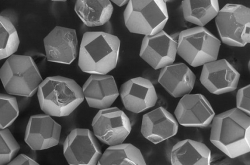ITMO Wireless is traditionally held as part of the St. Petersburg Antenna Week. For this event, experts in antenna technology, electrodynamics, radio photonics, and radio wave propagation from all over the country travel to St. Petersburg to exchange experiences at the school by ITMO’s Faculty of Physics and attend two conferences by St. Petersburg Electrotechnical University “LETI.”
“I’ve been a speaker and listener at the school ever since it was founded. Each time, the program is unique and covers a range of fields, from antennas for space applications to emitters for special purposes. This school is one of the few that brings together narrow-profile radiophysics experts from different parts of Russia, which makes me want to come to ITMO University again and again,” noted Konstantin Lemberg, a senior researcher at the Federal Research Center “Krasnoyarsk Science Center of the Siberian Branch of the Russian Academy of Sciences.”

Konstantin Lemberg. Photo by Pavel Kiriltsev
Each year, the school's team reviews its program to ensure it covers the latest trends and different branches associated with wireless technologies. This year’s topic was the design of antennas for the millimeter-wave range, used in 5G and potentially 6G networks. The speakers also discussed a variety of other topics, including domestic satellite communication systems, satellite navigation systems, parabolic antennas for space studies, base stations, and radio modules for terrestrial telecommunication networks.
“The radioelectronics sector in our country is growing at a rapid pace; however, the recent decade showed how fragmented our community of scientific schools and producers of radioelectronic elements and equipment really is. The mission of our school is to unite specialists from different parts of the country to create devices for terrestrial and satellite communications, radiolocation, and navigation. Therefore, it’s vital for electronic engineers, antenna engineers, designers, researchers, and students to participate in such schools; it’s their chance to share their experiences,” said Stanislav Glybovski, one of the school’s organizers and a senior researcher at ITMO.
ITMO Wireless is not only about theory but also practice. It comprises overview and training lectures on new wireless technologies, energy transfer and positioning, workshops on computer modeling and measuring the characteristics of antennas and microwave devices, as well as an exhibition of antenna equipment samples with new control and measuring devices. After completing the school, participants could take a final test to earn an advanced training certificate.
“I learned about the school a year ago from my colleague, who highly praised it for its organization and complex, multifaceted, and relevant content. This year, I was invited to give lectures at the school, so I was doubly glad to be here and experience the professional environment. As for my lecture, I shared some principles and practices of engineering design of active phased array antennas. This type of antenna is a necessary part of modern satellite constellations in low Earth orbits. One such system is Starlink. For quite a long while, I specialized in receiving antennas for satellite navigation, as well as problems of antenna miniaturization. Surprisingly, thanks to the reports and communication at the school, I came to discover new approaches in this field,” shared Ivan Illarionov, a senior engineer of microwave devices and antennas at RadioGigabit.
Next spring, ITMO Wireless is expected to branch out with specialized week-long courses for engineers, in which they will design a mock-up of a device with desired properties as part of a team and present it to the board of experts to receive their certificates. The organizers have already begun planning the next school scheduled for October 2025.










